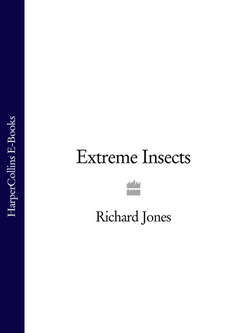Читать книгу Extreme Insects - Richard Jones - Страница 26
Most beautiful insect
Оглавление| NAME | birdwing butterfly, in particular Wallace’s golden birdwing Ornithoptera croesus |
| LOCATION | Batchian (Bacan), Indonesia |
| ATTRIBUTE | beautiful enough to cause one of the world’s most hardened travellers nearly to faint |
Beauty is very much in the eye of the beholder; just look at some of the names cooked up by entomologists. Scientific names regularly include terms such as formosa (handsome), splendidissima (most splendid), pulchrina (beautiful), nobilis (noble), venustus (lovely) and elegans (elegant).
There are many insects worthy of the title ‘most beautiful’, but nowhere is this better described than in the words of Victorian naturalist, scientist and traveller Alfred Russel Wallace. In a time before research grants, Wallace financed his travels by making collections for wealthy patrons or selling the handsome and strange specimens when he returned home to Britain. The highest value specimens were fabulous birds of paradise and beautiful birdwing butterflies. He knew only too well the worth of his collections. On the morning of 6 August 1852, during his return across the Atlantic from South America, the ship on which he was travelling, the Helen, caught fire and sank. Wallace and the crew spent nine days in the open life boats before they were rescued, but all Wallace’s specimens were lost.
Undeterred, he published his Travels on the Amazon and Rio Negro and was soon off exploring and collecting in Southeast Asia. He managed to bring his booty home safely this time, and captured the essence of exploration, discovery and the hunt for fantastical beasts in Malay Archipelago, published in 1859. On his first venture into the forests of Batchian (now Bacan), one of the Mollucan islands of Indonesia, he caught sight of a spectacular birdwing butterfly. It took him a further two months to finally collect a specimen. Wallace later named it Ornithoptera croesus, after the 6th-centuryBCE king of Lydia (now part of Turkey) famed for his wealth. Wallace’s words still resonate today:
‘The beauty and brilliancy of this insect are indescribable, and none but a naturalist can understand the intense excitement I experienced when I at length captured it. On taking it out of my net and opening the glorious wings, my heart began to beat violently, the blood rushed to my head, and I felt much more like fainting than I have done when in apprehension of immediate death. I had a headache the rest of the day, so great was the excitement produced by what will appear to most people a very inadequate cause.’
